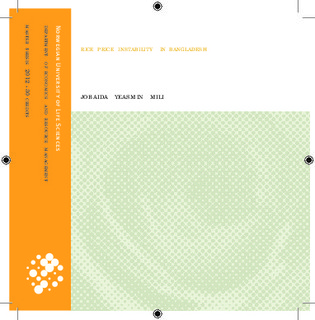| dc.description.abstract | In the 2000s, the global attention was concentrated at the food price stability because of the rapid increase in cereal and other food prices. This rapid increase of food price has become a burden for the developing countries as well as for Bangladesh where households spend a large share of their income on food. Among the cereals rice has a strategic importance because it is the central to food security and economic and political stability of the country. Fluctuation in rice prices is not rare in Bangladesh. This paper examines the market factors influencing rice price instability in Bangladesh over the period of 1980- 2010. Using annual data series of domestic rice price, production, consumption, stocks, fertilizer prices, import price, trade policy and natural calamities, a Two Stage Least Square (2SLS) method were applied. The results reveal that rice production, stocks and liberalized trade policy can reduce domestic rice price. On the other hand, more domestic consumption, higher import price and natural calamities increase rice price. The study suggests some policies on the basis of research findings. | no_NO |
